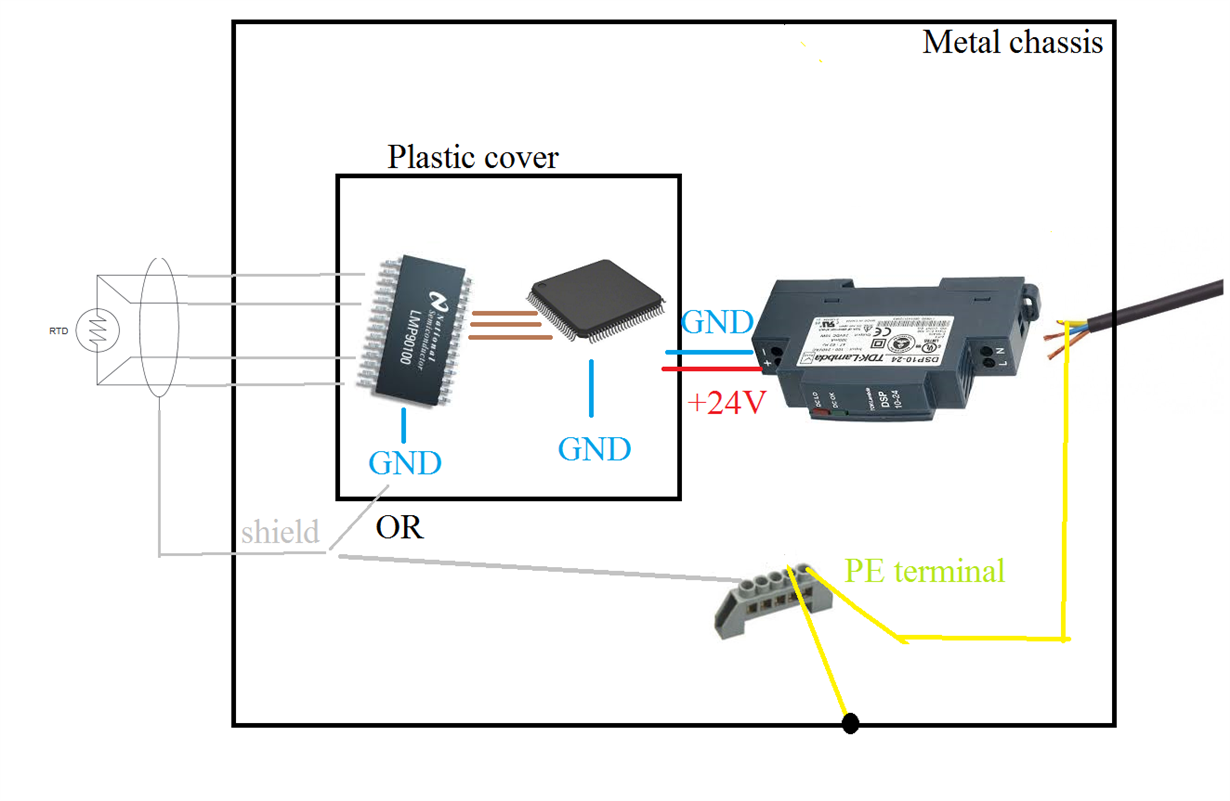Other Parts Discussed in Thread: ADS124S08, ADS114S08
Dear TI Engineer and Community,
i'm developing a RTD board with LMP90080.
I would like to ask You, how to proper connect a 4-wire PT100 sensor with a shielded cable to the LMP90080? At the RTD end there is no connection between shield and metal cover of the sensor.
Should I connect the cable shield to PE (metal chassis) or LPM90080's GND at the LMP90080 end?
For detailed info please refer to the attached picture
Thank You in advance, Ing. Tomas Heitel


